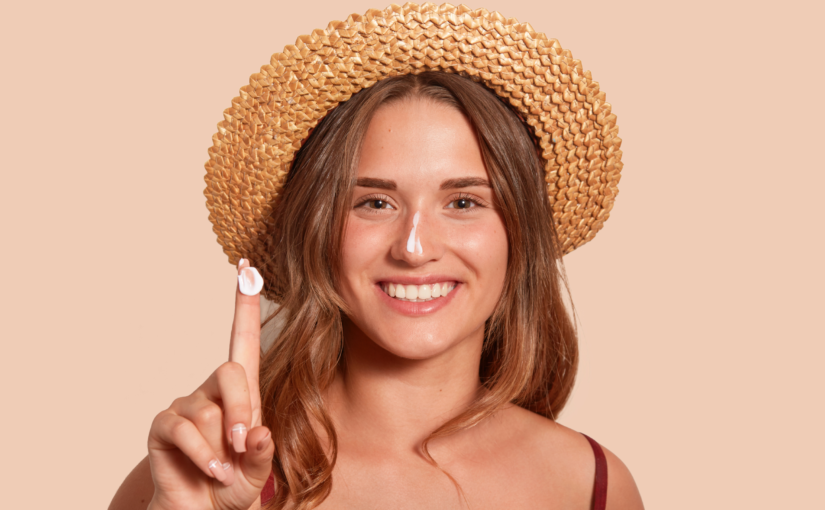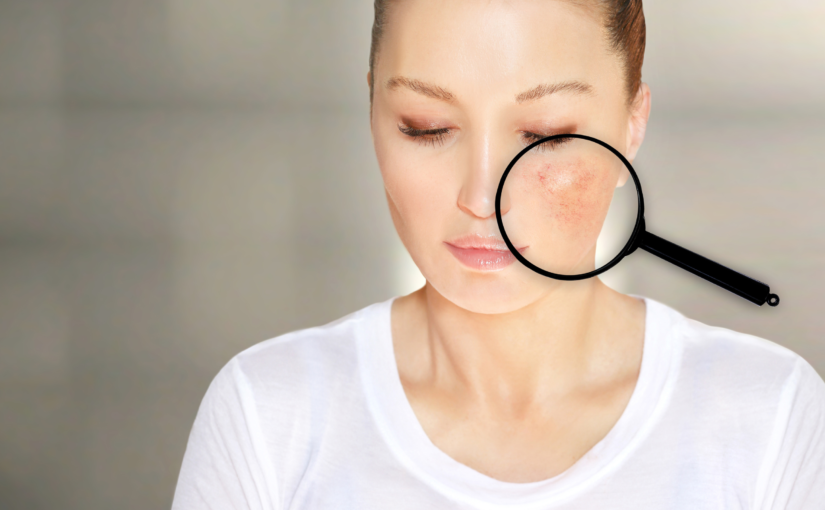My focus this week has been on the sun, we’ve had the most beautiful weather for a few weeks now, which is extremely out of character for the UK, so I thought it’s the perfect time address this subject. My previous post was on sunscreens and how we can protect our skin from the UV rays we get from the sun. This post is going to be all about one of the most common skin conditions that I see in my clinic and is a direct result of sun exposure, Photodamage or Photoageing.
So Photodamaged skin is an example of premature ageing, and premature ageing, you may already understand if you have read my E-Book, is ageing that is caused by external and internal factors that we can usually control.
Overtime UV rays from the sun penetrate our skin, UVB that travels into our epidermis (top layer), and UVA that can travel into the deeper layers of our Dermis. UVA, in particular, weakens our skins supporting collagen and elastin resulting in wrinkles, pigmentation, and a thickened, leathery appearance.
So if we look at UVA rays and how they affect our skin. These damaging rays are out in full force regardless of the weather. Come rain or shine they are there, travelling through the clouds on a cloudy day and through our windows in our homes or cars, we cant escape them! Their wavelength allows them to travel right into the dermal layer of our skin and attack our collagen, elastin and hyaluronic acid and also the production of these components as well.
Free Radicals – UV rays cause free radical activity within our skin cells this causes damage to the cells DNA and can render them useless. They cant do the job they are there to do which can have a knock-on effect on other functions within the skin.
Vitamin C– Vitamin C is needed for collagen production, however, UV rays oxidise this vital nutrient so it is no more. Your fibroblast cells will then be missing one of the most important components in its production of collagen. Imagine baking a cake without flour!!!
Vitamin A– UV also inactivates Vitamin A receptors in the skins cells. Vitamin A is required for cellular reproduction and functioning. So if this is not available the chances of poor cellular production or damage are high.
MMP’s– MMP’s or Matrix Metalloproteinases are enzymes that live in our dermis, their job is to breakdown old, damaged collagen to make room for new collagen to be made. When the skin is exposed to excessive sun or exposed every day to the UV rays this can cause the MMP’s to proliferate and start breaking down our healthy collagen.
If we take all these factors above into account, it spells a recipe for poor collagen levels within the skin and therefore poor structural support. If our skin doesn’t have structure, then what does it have? Yes, you guessed it, WRINKLES!!!
The photo here is a powerful image portraying the power of sun damage. Its thought this gentleman was a truck driver in the States. You can clearly see that the side of his face that was exposed to the UV rays through the window in his truck has considerably more photodamage than the other side.
Another characteristic of Photodamage is pigmentation. Our skins main role is protection, and our melanin is part of the skin protective armour. However, it’s not always fully cut out for the role.
Melanocytes are the skin cells that produce our skin’s pigment (melanin), they sit at the base of the epidermis, so both UVA and UVB rays can reach them. They have an octopus-like shape allowing them to feed lots of epidermal skin cells (keratinocytes) at once. The melanocyte produces melanin to protect our skin cells nucleus form the attack of UV rays. However, with long-term exposure or excessive exposure, these melanocytes can go a little crazy. The damage to these cells DNA can cause them to over produce melanin, and deposit it into cells that it shouldn’t, such as the stem cells or neighbouring melanocyte cells. These cells, unlike the keratinocyte cells, are permanent; they don’t desquamate off so that pigment also becomes permanent. This is why we see those freckles or age spots appearing on the surface of our skin.
The thing with photodamage is its not an immediate effect. The symptoms of the condition happen gradually over the years with the accumulation of sun damage. So when the damage is actually being done we can be totally oblivious to it until we look in the mirror one day and realise that damage that has been done. It can then be a task to try and reverse the damage. The old-age saying of prevention is better than the cure is certainly one to follow here. My next blog is going to be all about prevention and how to treat photodamaged skin, so be sure to pop back in a few days.
For help with your skin book your virtual skin consultation here.



